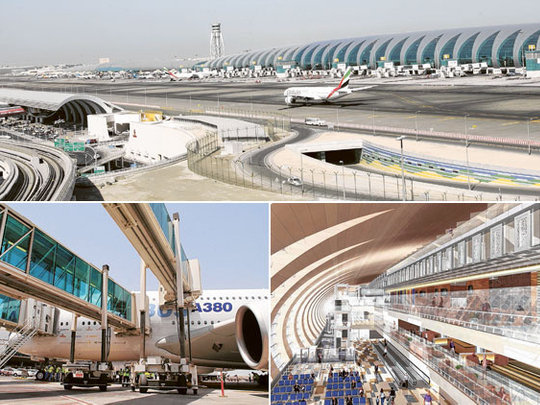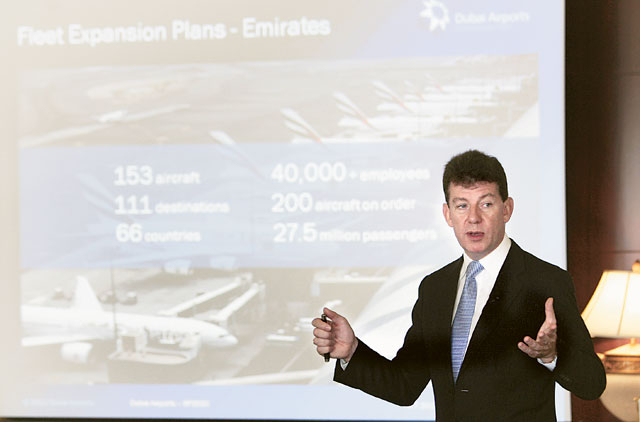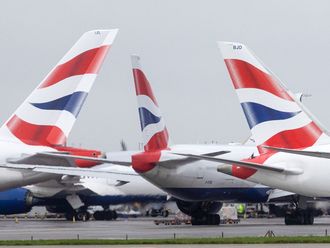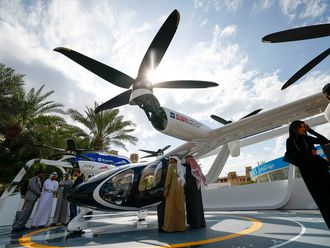
Dubai: Dubai will invest $7.8 billion (Dh28.62 billion) to expand Dubai International airport under a 10-year plan, permitting capacity to be increased from the current 60 million to 90 million passengers per year by 2018, Dubai Airports said yesterday.
It added that the plan which responds to a decade-long traffic forecast for Dubai International (DXB) and Dubai World Central (DWC)-Al Maktoum International, has been approved by His Highness Shaikh Mohammad Bin Rashid Al Maktoum, Vice-President and Prime Minister of UAE and Ruler of Dubai.
The plan is primarily aimed at facilitating Dubai's economic expansion by generating 22 per cent of the emirate's employment and contributing 32 per cent to Dubai's gross domestic product (GDP) by 2020.
"The combination of rallying tourism, Dubai's proximity to the emerging economies of India and China, and the emirates' established role as a trading hub, is together expected to drive traffic growth and further elevate Dubai's status as a global centre for aviation," Shaikh Ahmad Bin Saeed Al Maktoum, Chairman of Dubai Airports and President of Dubai Civil Aviation and Chairman of Emirates airline and Group, said in a statement.
International passenger and cargo traffic are projected to increase by an average 7.2 per cent and 6.7 per cent respectively by 2020.
"By 2020, 98.5 million passengers and over four million tonnes of air freight will pass through our airports," said Shaikh Ahmad, adding that the fleet and networks of Emirates and flydubai will grow considerably to accommodate traffic and capture market share.
"We are investing $7.8 billion to capture, augment and deliver benefits to consumers, airlines and the broader economy," said Paul Griffiths, chief executive of Dubai Airports.
He added that the strategy includes aggressive expansion plans for "airspace, airfield, aircraft stands and terminal areas" at Dubai International over the remainder of the decade in order to optimise investment, deliver timely capacity — further inching closer to attaining the world's busiest airport title for international passenger traffic by 2015.
Robust revenue stream
"It would also create a robust revenue stream, fuelled by increased commercial and retail income, which will fund the development of Dubai World Central in the long term," Griffiths said.
Clearly, a lot of this growth is being fuelled by Emirates' [airline] aggressive expansion.
Currently operating with a fleet of 153 wide-bodied aircraft, and with additional 200 aircraft on order (majority being Airbus A380s), Emirates would require a huge area to accommodate and manage its growth and additional aircraft operations.
Flydubai, meanwhile, has 16 aircraft in its fleet, with 34 more on order.
"Of the 90 million passenger goal, these two airlines could account for 76 per cent of that number. The A380s alone could account for about a third. Note, we are looking at 100 per cent load factors, which is unrealistic, but then again Emirates needs to keep them as full as possible.
"Indeed, the airline is already buying load factors by cutting fares now," Addison Schonland, a partner of AirInsight, an aviation and aerospace consultancy focused on industry competitive intelligence, told Gulf News.
Echoing similar thoughts is an aerospace and defence analyst at Frost & Sullivan: "Expansion of Dubai Airport is extremely good news for the Middle East airlines that are undergoing fleet expansion plans. This increase in fleet size will create a need for more parking space and infrastructure in the long run which in turn will bring more passenger traffic to the airport."
This is where a fourth [additional] concourse comes into play. As part of its masterplan for the next 10 years, Dubai Airports will construct Concourse 4, which will be connected to Terminal 1 to facilitate check-in and baggage servicing, thus adding further capacity to the existing concourses.
Concourse 4
While Concourses 1 and 2 are already in service, Concourse 3 will be open for business by the end of this year, boosting capacity to 75 million passengers.
"This will be built in front of the Cargo Village at Dubai Airport, and give access to other airlines to deliver good quality product as well as allow Emirates to expand further," said Griffiths.
Asked about the capacity of Concourse 4, he said: "We are not quite sure of the size of Concourse 4 yet. Our planning team would probably have a better idea than me. But we are talking about 2015 [for it to be opened]."
He further said that beyond Concourse 3, Dubai Airports will commission the construction of additional terminal space and concourse areas comprising an extra 675,000 square metres of floor space — twice the footprint of London Heathrow's Terminal 5, including expansion of Terminal 2 and the construction of C4.
With aggressive growth strategy comes an equal amount of risk, warns market experts.
"The rising oil prices can prove to be a challenge as this may force airlines to increase air fares and cut routes, which may have a negative impact on the passenger traffic and airlines' profitability," said the aerospace and defence analyst at Frost & Sullivan.
Similarly, "Team Dubai" must attract a lot of other traffic from airlines outside the UAE, cautions Schonland of AirInsight.
This year's Dubai Airshow in November will be the last one at Dubai's Airport Expo, according to Griffiths.
"The next Dubai airshow in 2013 will be held at DWC," he said.
Once fully completed, Dubai World Central will be the world's largest airport with five runways and a capacity for 160 million passengers and 12 million tonnes of cargo annually.
Funding in place for future growth
By 2020, almost 83 per cent of Dubai Airports' income is expected to come from commercial sources — such as retail, food and beverage, duty free — and not from aeronautical fees by 2020, according to CEO Paul Griffiths.
Asked how much it is today, he said: "It's not too far away from that at present. But we see most of the growth coming from those commercial sources in the future."
When quizzed on the airport body's future financing options for the massive decade-long growth plan, Griffiths said: "The cash flow from Dubai Airports and Dubai Duty Free makes paying for the expansion very manageable." He added that depending on the financing plan chosen, Dubai Airports — currently funded by the government, could consider becoming a "standalone" company.
Commercial revenue
"It is possible for us to consider quite a number of different arrangements. This is not a real estate play. This is not speculation. This is a real operating model that is delivering consistent and solid profits and growth, and therefore, our options to finance the future will be considerable," he said.
Asked if issuing bonds or listing shares were among the options being considered, Griffiths told Gulf News: "There are many different options being considered. These are very early stages. It's a decision that the Department of Finance will come to in the fullness of time."
Further, the airport body has done a cash flow to show what its commercial revenue, aeronautical revenue and duty free revenue are able to support over the next 10 years, according to Griffiths.
"And I have to say it looks very good. So that is a very finance-effective model," he said.













